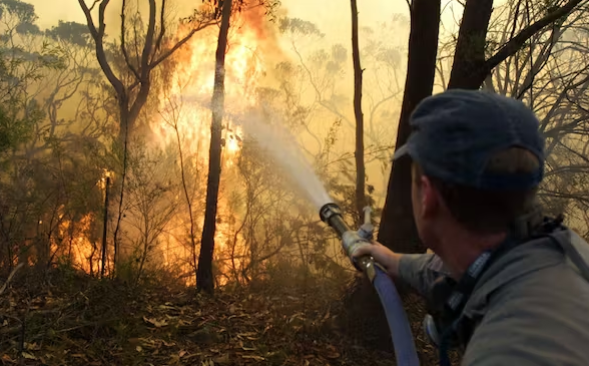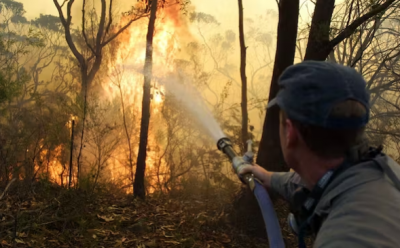Recent wildfires around the world have shown that Australia is among the most fire-prone continents on Earth, making expressions like "Black Summer," "Black Saturday," and "Ash Wednesday" more common than saying hello every morning. Alarmingly, climate change is making wildfires more frequent. This is a significant concern, given the devastating effects of fires on both human communities and the biodiversity of plants and animals.
New research, according to a report by "The Conversation," shows that the trend towards ubiquitous fire occurrences is not uniform. By tracking the phenomenon in parts of Victoria over the past forty years, it becomes clear that the frequency of fires is increasing across all the ecosystems studied, but to varying degrees. In some places, fires are putting entire ecosystems at risk of collapse and decreasing biodiversity, prompting further questions regarding the controversial practice of logging native trees.
Understanding the impacts of wildfires is not sufficient by focusing on a single fire. The author, Jo Aditonji, highlights the need to "examine consecutive fires in a given area and their recurrence, with a focus on southeastern Australia - one of the most densely populated parts of the continent, due to its dense, fire-prone forests."
The author details the regions: "We identified six geographical areas in Victoria known as bioregions. These regions differ in their climatic conditions, geological characteristics, biodiversity, and other attributes. Collectively, the six regions cover 4.64 million hectares—mostly forested land. It was found that the 'Gippsland Lowlands' region in Victoria experienced more fires between 1981-2000 than the other areas studied, with a modest increase in the number of fires between 2000 and 2020. This discrepancy does not end here.
The report highlights a connection between the frequency of wildfires and topographic characteristics such as slopes, as well as climate measures like rainfall and temperature. However, the impact of these factors varied significantly among regions. The report notes: "For example, in four bioregions we studied, wildfires became more frequent with decreasing rainfall. But the opposite was true in the other two bioregions. The reasons for these complex results remain unclear. It is also worth noting that storm occurrences may be accompanied by lightning (which can ignite fires). Additionally, slopes can facilitate faster water runoff, meaning that rainfall may not be retained in the soil as it otherwise might, potentially leading to drier forests."
Similarly, fire frequency was also affected by the extent of deviation of temperatures from long-term averages. Generally, this deviation has been towards higher temperatures. In some areas, this temperature variation was associated with less frequent fires. In other cases, it coincided with more frequent fires. Again, the reasons for these differences are not yet clear.
This increase in fire frequency is concerning. Some areas particularly prone to fires are dominated by ash eucalyptus trees. Consistent with previous analyses, we found evidence of locations that experienced up to four fires in the last 25 years. Historically, fires in ash-type ecosystems occurred only once every 75 to 150 years. Frequent fires in these environments could lead to the collapse of the entire ecosystem.
The report concludes with a close link to arson for timber exploitation. This suggests that the yield of native logging in southeastern Australia will decrease, making this practice financially riskier.
What Should Happen Next?
The findings confirm that wildfires have become more frequent in parts of southeastern Australia. While climate change affects the frequency of fires, the impacts vary by geographical area. It is clear that efforts should be made to reduce the number of wildfires. This response should include taking more stringent steps to combat climate change. However, even if humanity faces this enormous global challenge, it will take a long time before we see demonstrable changes in climatic conditions.
Among the most urgent options is the management of vegetation to reduce flammability. For example, logging could be reduced, and the density of highly flammable forests mitigated; thus, these practices should be halted in these vulnerable ecosystems.
The report concludes that there is a "need for more efforts to preserve biodiversity affected by fires and to maintain ecosystems at risk of collapse. We must also adopt new technologies to detect wildfires as soon as they ignite and suppress them as quickly as possible."




